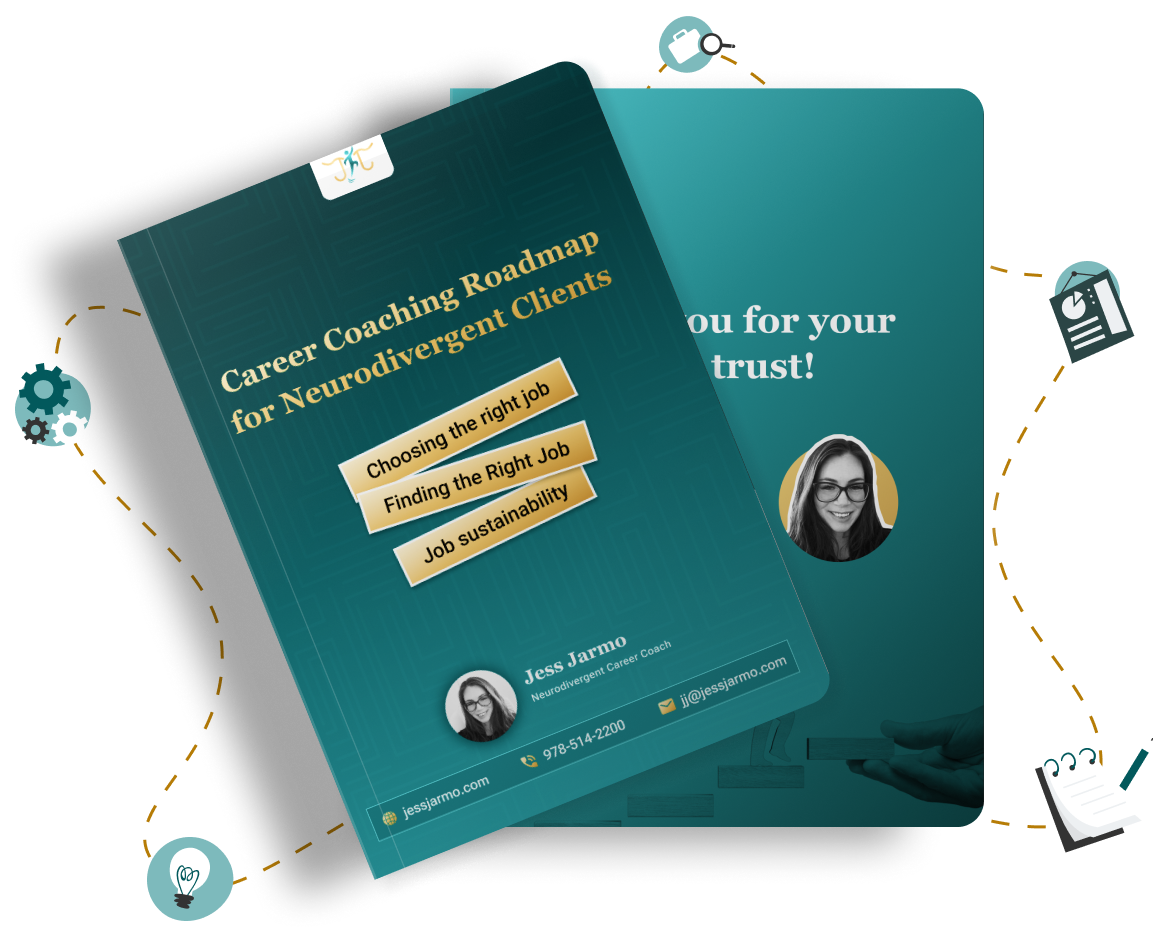

Table Of Content
As a Neurodivergent Career Coach, I’ve had the privilege of working with incredible individuals with ADHD, Autism, dyslexia, and other neurodivergent traits. I’ve learned that neurodivergent job seekers bring unique strengths to the table—creativity, attention to detail, problem-solving, and out-of-the-box thinking, to name a few. However, the traditional job search process can feel overwhelming, especially when it comes to crafting a resume and cover letter that truly reflects your value.
This guide is here to help you navigate the process with confidence. Whether you’re neurodivergent yourself or supporting someone who is, these tips are designed to be practical, inclusive, and empowering. Let’s dive in!
Understanding Your Strengths
Before you start writing, take a moment to reflect on your unique skills and perspectives. Neurodivergent individuals often excel in areas like:
- Creativity and Innovation: Your ability to think differently can lead to groundbreaking ideas.
- Attention to Detail: Many neurodivergent individuals have a keen eye for spotting patterns or errors others might miss.
- Problem-Solving: Your unique perspective allows you to approach challenges in ways that others might not consider.
- Passion and Focus: When you’re interested in a topic, you can dive deep and become an expert.
These strengths are your superpowers. As you write your resume and cover letter, think about how these qualities have helped you succeed in past roles or projects.
Structuring Your Resume
A simple, well-organized resume is key to making a great first impression. Here’s how to structure yours effectively:
1. Choose the Right Format
- Chronological Format: Preferred overall. Use Reverse Chronological order with your most recent experience at the top.
- Functional Format: Not recommended, as skills and accomplishments should be included in context for greatest effect.
- Combination Format: Balances work history and skills, by showcasing transferable skills in their own skills section.
2. Use Clear Headings and Sections
- Name and Contact Information
- Professional Summary (2-3 sentences highlighting your key strengths and career goals)
- Skills (Not necessary once you have relevant experience but be sure to include both hard and soft skills in your resume)
- Work Experience (use bullet points to describe achievements, not just duties)
- Education and Certifications
3. Highlight Transferable Skills
Even if your past roles aren’t directly related to the job you’re applying for, focus on skills that are transferable, such as communication, teamwork, or project management.
4. Keep It Concise
Use clear, straightforward language. Avoid jargon or overly complex sentences. Tools like Grammarly or Hemingway Editor can help simplify your writing.
5. Tailor Your Resume
Write it to target a specific type of position. Don’t tailor your resume to each job posting but instead, tailor it to the type of role and the industry you are seeking. If you make it too general, it won’t appeal to anyone, so if you need to, create separate versions for separate types of jobs instead.
Writing a Neurodivergent-Friendly Cover Letter
Your cover letter is your chance to show your personality and passion for the role. It should contain something unique and be a companion to your resume, and not just a mini version. Here’s how to make it stand out:
1. Start with a Strong Opening
Grab the reader’s attention by mentioning something specific about the company or role that excites you. Speak to a general problem, align with their mission, or address a need.
2. Showcase Your Strengths
Introduce your background, experience, skills, and knowledge that aligns with the role. Use examples to demonstrate how your unique skills and experiences make you a great fit for the job. For instance, if you’re detail-oriented, share a story about a time when your attention to detail made a difference.
3. Align Yourself with The Company
Tie your experience into the role, the company, or their values. Something that makes it appear obvious that this would be a natural fit or of interest to both of you.
4. End with Enthusiasm
Close by reaffirming your suitability, your excitement about the opportunity and invite further discussion by expressing your eagerness to discuss how you can contribute to the team.
Accommodations and Disclosure
Deciding whether to disclose your neurodivergence is a personal choice. Here are some things to consider:
1. When to Disclose
If your neurodivergence is a key part of your identity and you feel it’s relevant to the role, you might choose to mention it in your cover letter or interview.
If you need accommodations during the interview or hiring process (e.g., extra time on tests), you can disclose this to the recruiter or HR by requesting specific accommodations you need in order to perform at your best.
2. How to Disclose
Focus on the positive and the valuable skills you’ve developed. For example, “My neurodivergence has taught me to be highly adaptable and thrive in fast-paced environments.”
Be concise and positive.
3. Requesting Accommodations
Be specific about what you need (e.g., “I need a bit more processing time and I’m able to perform at my best for the interview process”).
Remember, employers are legally required to provide reasonable accommodations. But as “reasonable” is a subjective term, be ready to communicate how this will address your specific challenge, and be prepared to collaborate to find a solution that works well for both sides.
Tools and Resources
Here are some tools to make the resume and cover letter writing process easier:
- Grammarly: Helps with grammar and clarity.
- Hemingway Editor: Simplifies complex sentences.
- Trello or Asana: Organize your job search tasks.
- Resume Templates: Use platforms like Canva or LinkedIn for professional templates.
- Text-to-Speech Tools: Helpful for proofreading if you have dyslexia.
Final Tips for Success
- Be Authentic: Don’t try to fit into a neurotypical mold. Your uniqueness is your strength.
- Take Breaks: Writing a resume and cover letter can be mentally taxing. Break the process into smaller steps.
- Seek Feedback: Ask a trusted friend, mentor, or coach to review your documents.
- Stay Positive: Job searching can be challenging, but every application is a step closer to the right opportunity.
Ready to Take the Next Step?
Writing a resume and cover letter as a neurodivergent job seeker can be challenging, but with the right approach, you can showcase your skills effectively. If you need personalized guidance, consider working with a neurodivergent career coach for expert support tailored to your strengths.
References
1. Creativity & Innovation, Attention to Detail, Problem-Solving:
Austin, R. D., & Pisano, G. P. (2017). Neurodiversity as a Competitive Advantage. Harvard Business Review.
https://hbr.org/2017/05/neurodiversity-as-a-competitive-advantage
2. Job search difficulties & accommodations:
Harvard Business Review on workplace neurodiversity:
https://hbr.org/2022/02/is-your-company-inclusive-of-neurodivergent-employees
3. Legal Rights & Workplace Accommodations
Americans with Disabilities Act (ADA) guidelines on workplace accommodations:
https://adata.org/factsheet/reasonable-accommodations-workplace

